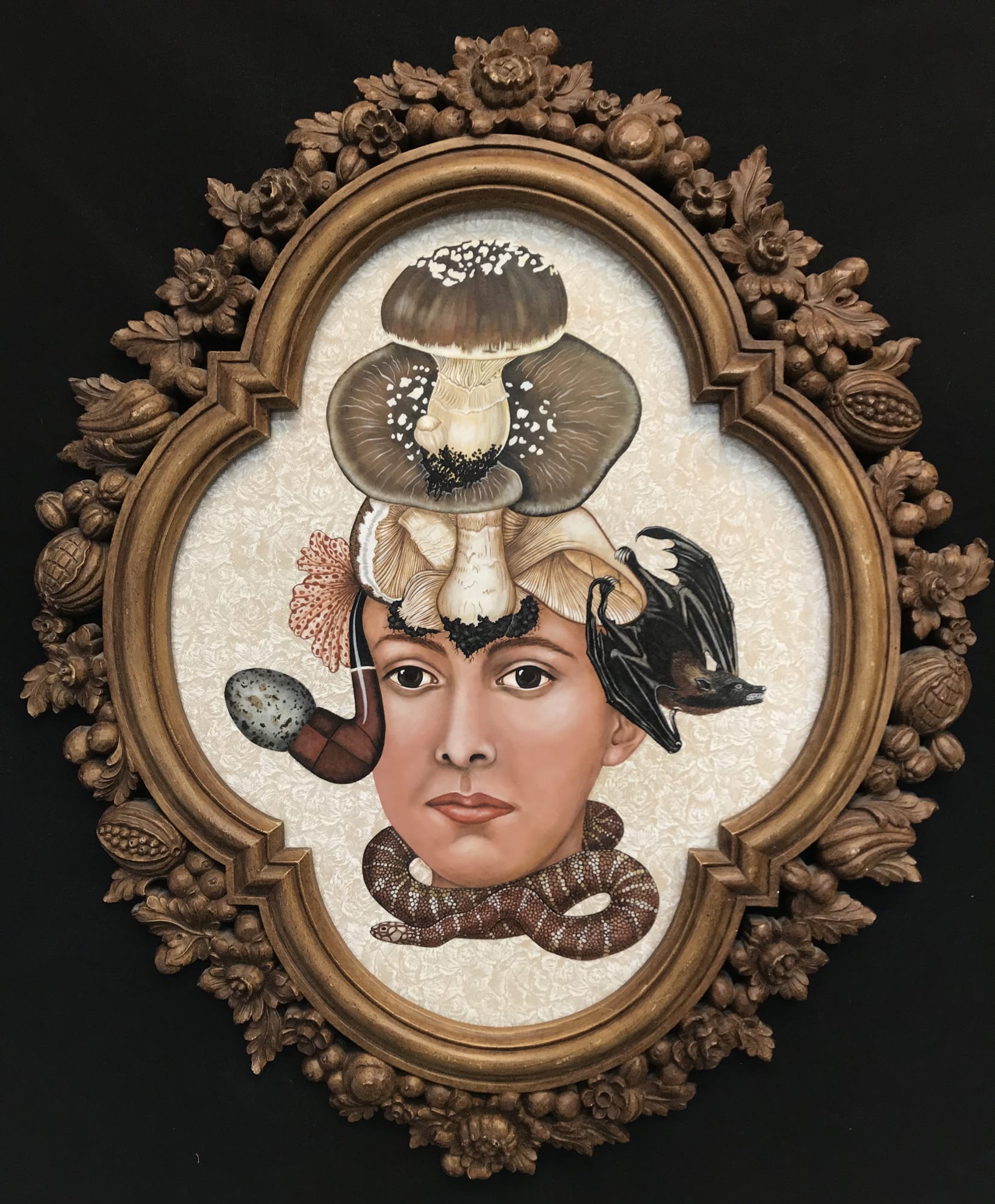-
Lezley Saar
Yassa is a trickster who lives in every corner of the forest. Sometimes she appears as a goat with a woman’s head, passing in and out of the visible world, partaking in ridiculous orgies, 2019Acrylic on fabric on board in found antique frame73.7 x 63.5 cm
29 x 25 in.Copyright the artist'Yassa is a trickster who lives in every corner of the forest. Sometimes she appears as a goat with a woman’s head, passing in and out of the visible world,...'Yassa is a trickster who lives in every corner of the forest. Sometimes she appears as a goat with a woman’s head, passing in and out of the visible world, partaking in ridiculous orgies', 2019, was part of an exhibition entitled 'A Conjuring of Conjurors' (2020) in which Saar explored the shared histories of feminism and spiritualism. For first wave feminists in the fin-de-siècle period esoteric occultism became a means to counter patriarchal discourses and power structures. Saar continues this tradition by inventing a whole new range of clairvoyants and oracles who, like their ancestors, use essences and talismans to heal what is broken in the world.
Yassa is one of these mythical figures, and she is adorned with a number of ambiguous symbols. Her smooth skin and melancholy gaze are contrasted with the bat, the poisonous mushrooms and the snake ringing around her neck. The multifaceted meanings of these symbols invite subjective responses to the work, depending on the onlooker’s personal cultural vocabulary. For instance, in Jewish and Christian traditions the symbol of the snake is associated with evil whereas it is perceived as a sign of wisdom in other non-Christian religions.
Lezley Saar creates paintings, collages and installations that investigate themes of identity, gender and race. Her dreamlike portraits explore spaces of hybridity, between black and white, masculine and feminine, sanity and madness. Combining archival research with her own experience as a bi-racial woman, her subjects challenge conceived ideas of beauty and normality. Her distinctive visual language is derived from a canny use of unanticipated sources, and within her diverse character collection each portrait tells its own bewildering story. Saar’s relationship with her transgender son, who transitioned from female to male, was the starting point of her latest body of work.
Born 1953 in Los Angeles, CA, Saar received a B.A. from California State University at Northridge in 1978. In 1996 she received the J. Paul Getty Mid-Career Grant, and she has participated in solo and group exhibitions both nationally and internationally. Saar’s work has been sold at Christie’s Auction House and is shown in museum collections including The Kemper Museum, CAAM, The Ackland Art Museum, and MOCA.
Join our mailing list
* denotes required fields
We will process the personal data you have supplied in accordance with our privacy policy (available on request). You can unsubscribe or change your preferences at any time by clicking the link in our emails.

